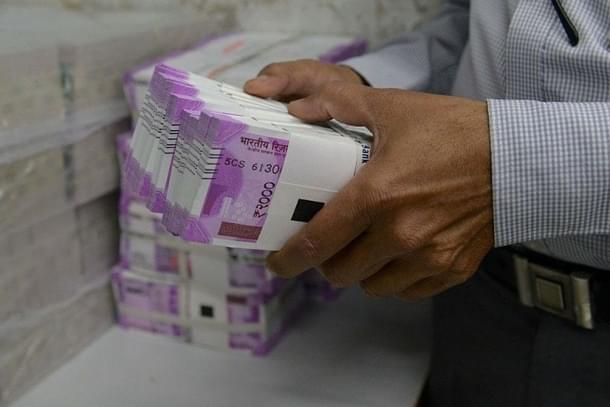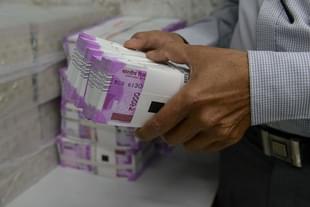Economy
Public Sector Bank Reforms: Sunil Mehta Panel Should Look At The Larger Canvas
K Srinivasa Rao
Jun 26, 2018, 02:28 PM | Updated 02:28 PM IST
Save & read from anywhere!
Bookmark stories for easy access on any device or the Swarajya app.


Disproportionate rise in toxic assets is the bane of the banking system. Out of the bank’s asset size, close to Rs 150 trillion, the stressed assets are estimated to have reached the mark of Rs 15 trillion - if stock of non-performing assets (NPAs) and stressed assets under special mention accounts (SMA) including ‘one day default’ are considered. About 90 per cent of such stressed assets are held by Public Sector Banks (PSBs). Ever since huge pile of NPAs stood out starkly threatening the fundamentals of banks, the anguish of stakeholders increased. Mandarins of bank reforms and policy makers intensely debated to find solutions to tackle the NPA menace. Due to the cascading impact of such elevated NPAs, 11 out of 21 PSBs are already placed under prompt corrective action (PCA) narrative of the Reserve Bank of India (RBI).
Measures under PCA are ostensibly intended to nurse them back to health. They are required to focus on core parameters and restrain their expansionary functions till normalcy is restored. It curbs their autonomy to grow with far reaching impact on their image. Fresh lending is hampered to the detriment of growth prospects of the economy.
Looking to the damage that NPAs have caused, hiving them off to a special purpose vehicle (SPV) is desirable. The expert committee led by Sunil Mehta is examining the possibility of a formation of Bad Bank or Public Sector Asset Rehabilitation Agency (PARA) to free the banks from the burden of NPAs. Such a move can help the banks resume their developmental role. It is the right time to trim down balance sheet size of banks by separating toxic assets to enable them to reinvent their business strategies and reach out to the masses. But who will foot the bill for such an astounding sum is to be worked out by augmenting domestic and international sources.
But the formation of an SPV may pose certain imminent challenges. (i) Will the value of assets be paid instantly to banks or will it be on Asset Reconstruction Company (ARC) model of issuing Security Receipts (SRs) to be redeemed as and when NPAs are recovered. (ii) how to augment human resources to follow up the stock of pooled NPAs to enforce recovery through different tools including by invocation of IBC process. This will require expertise in dealing with the process. (iii) How to continue to keep NPA borrowers under same pressure to repay loans lest they should escape repayment obligation setting a bad precedent. (iv) But once PSBs are divested of problem credit, it will be necessary to reform credit administration process so as to prevent future accumulation of NPAs. Preventing resurgence of NPA menace is more important than tackling existing stock.
Therefore, while considering the idea of creation of SPV to stock the NPAs, it will be necessary to think beyond and work out systems and procedures, create checks and balances to strengthen (i) Credit origination process – appraisal of loans, due diligence and assessment. (ii) credit-monitoring system – to prevent recurrence of present form of bad debt crisis. It will need autonomy to PSBs in credit administration, credit decisions well aligned with a framework of accountability. Given the reforms in strengthening loan repayment culture with improved Insolvency and Bankruptcy Code (IBC) framework and proposal to form Public Credit Registry (PCR), banks should be in a better position to contain NPAs within the manageable level of say, one per cent of loans. A holistic application of a thought process in articulating SPV will be needed to enable streamlining of the functioning of PSBs. They have a great transformative role to ameliorate the sufferings of people at the bottom of the pyramid. Thus formation of ‘bad bank’ can be a good idea, provided governance in PSBs is improved after the toxic portfolio is removed from their books.
While creation of systemic controls in banks to improve asset quality is essential, it also calls for creation of sustained loan repayment culture. The borrowers should have fear in the minds against default and misuse of bank loans. In the light of PNB fraud, several initiatives have been taken to fix responsibility of external stakeholders like statutory auditors, concurrent auditors and board governance. The internal credit governance in banks must be supported by a good credit culture where lending and recovery becomes a seamless integrated function.
The credit monitoring systems and resolution mechanism introduced by RBI in its new framework addresses most of the factors that were responsible for bad loans reaching this level. But future NPAs will depend upon the seriousness with which banks implement these guidelines in practice within the set deadlines. En-route to its implementation, a tacit dilution in business interest may jeopardise the long-term interest of banking system. Finding solutions to the current crisis can be a short term palliative, what is more important is to think beyond and firm up the foundation of quality asset creation.
This will call for formation of the holding company to provide capital to PSBs in terms of Dr P J Nayak Committee recommendations. The journey from Banking Board Bureau (BBB) to Bank Investment Company (BIC) will decide the intent of transforming PSBs into autonomous professional outfits. It may not be in the scope of the present committee but a larger canvas and thinking beyond bad bank need to be covered if PSBs are to reform in the larger interest of the economy.
K Srinivasa Rao is Adjunct Professor, Institute of Insurance and Risk Management – IIRM. The views expressed are his own.





